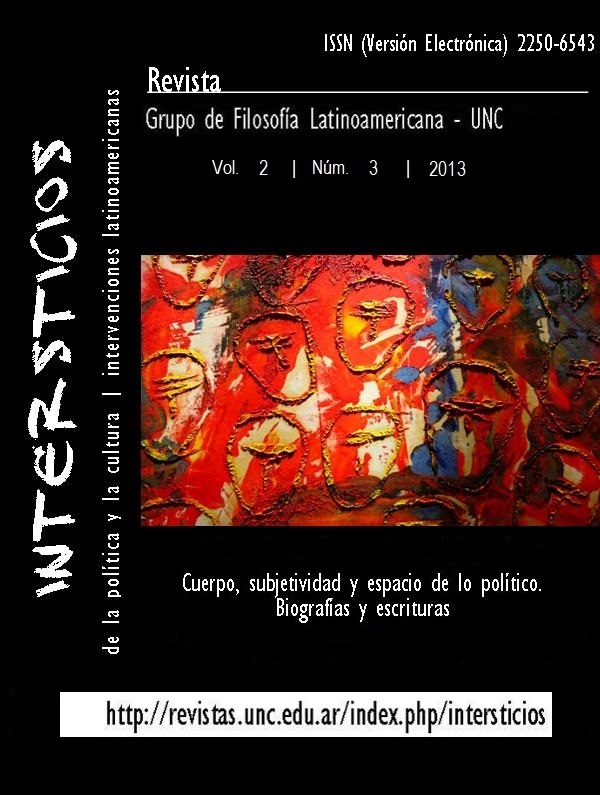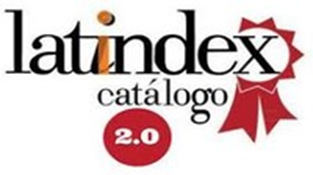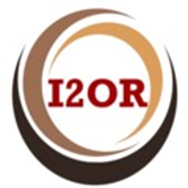TOKONOMAS DEL NEOBARROCO: INTERPELACIONES ENTRE LA FICCIÓN AUTOBIOGRÁFICA Y EL BIOGRAFEMA
Resumen
Resumen
En este artículo analizaremos un breve corpus de textos autobiográficos de Severo Sarduy: El Cristo de la rue Jacob (1978) y “Lady SS” (1992), a través de la relación imaginación-simulación que se formula centralmente en el ensayo La Simulación (1987). En primer lugar, problematizaremos las interpelaciones entre la “ficción autobiográfica” sarduyana y el biografema barthesiano, como una modulación en la pregunta acerca de cómo escribir la propia autobiografía y con-otros, como parte de un programa ético-estético que, en las escrituras autobiográficas promete posibilidades de existencia a través de simulaciones de formas de vida. En segundo lugar, analizaremos en Teoría del Cielo (1992) de Arturo Carrera y a Teresa Arijón, un trabajo biografemático sobre artistas latinoamericanos, operaciones de construcción crítica de genealogías neobarrocas en la literatura argentina. El biografema de Sarduy que aparece en esta obra, titulado “Tokonoma”, indaga la tradición barroca lezamiana y sus modos de concebir la imagen. De esta manera, en Carrera y Arijón leemos el diálogo incesante entre la imagen lezamiana y la sarduyana, entre la autobiografía barthesiana y la sarduyana. En definitiva, con este ensayo nos dedicaremos a la modulación por la cual la “ficción autobiográfica” sarduyana dialoga con un ejercicio biografemático, y cómo desde la literatura argentina que los lee, se interpela el proyecto ético-estético de imaginar y simular formas de vida.
Palabras claves: Ficción autobiográfica – Biografema – Neobarroco latinoamericano.
Abstract
In this article we will discuss a brief autobiographical corpus of Severo Sarduy: El Cristo de la rue Jacob (1978) and "Lady SS" (1992), through the relation between “imagination-simulation” like is formulated in La simulación (1987). First, will attend to inquiries between "autobiographical fiction" in Sarduy and “biografema” in Barthes, as a modulation in the question about how to write their own autobiography and with-others, as part of an ethical-aesthetic program that promises, in the autobiographical writings, the possibility of existence through simulations of life forms. Second, we analyze in Teoría del Cielo (1992) of Arturo Carrera y Teresa Arijón, a biografematical work about latin american writters and artists, like a critical construction of neo-baroque genealogies in the literature. The Sarduy´s biografema appearing on this work, entitled "Tokonoma", and explores the baroque tradition of Lezama Lima, and their ways of conceiving the image.In this way, we read with Carrera and Arijón, the incessant dialogue between Sarduy´s and Lezama´s conception of image, between Sarduy´s and Barthes´s conception of autobiography. In conclusion, this essay focus on the modulation which the "autobiographical fiction" of Sarduy dialogue with biografematical exercise, and how literature from Argentina that read, interpellates the ethical-aesthetic project to imagine and simulate lifestyles.
Key-words: Autobiographical fiction– Biografema – Latinamerican neo-baroque
Descargas
Descargas
Publicado
Número
Sección
Licencia
Aquellos autores/as que tengan publicaciones con esta revista, aceptan los términos siguientes:- Los autores/as conservarán sus derechos de autor y garantizarán a la revista el derecho de primera publicación de su obra, el cuál estará simultáneamente sujeto a la Licencia de reconocimiento de Creative Commons que permite a terceros compartir la obra siempre que se indique su autor y su primera publicación esta revista.
- Los autores/as podrán adoptar otros acuerdos de licencia no exclusiva de distribución de la versión de la obra publicada (p. ej.: depositarla en un archivo telemático institucional o publicarla en un volumen monográfico) siempre que se indique la publicación inicial en esta revista.
- Se permite y recomienda a los autores/as difundir su obra a través de Internet (p. ej.: en archivos telemáticos institucionales o en su página web) después del proceso de publicación, lo cual puede producir intercambios interesantes y aumentar las citas de la obra publicada. (Véase El efecto del acceso abierto).











